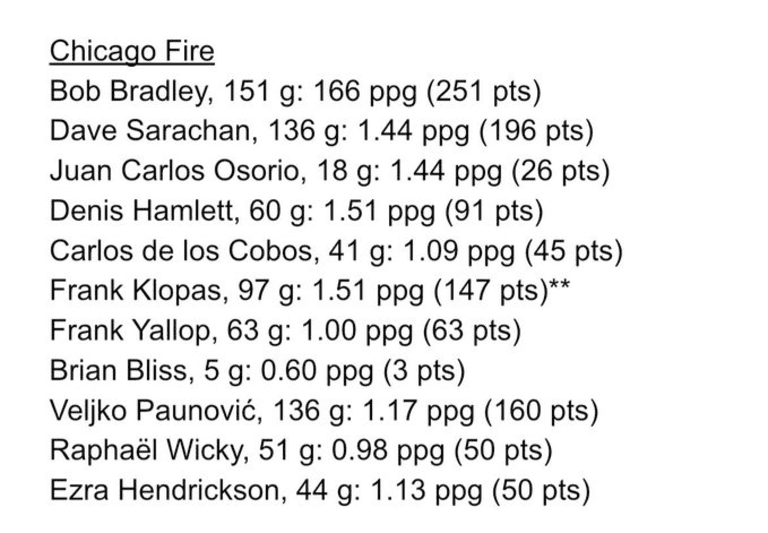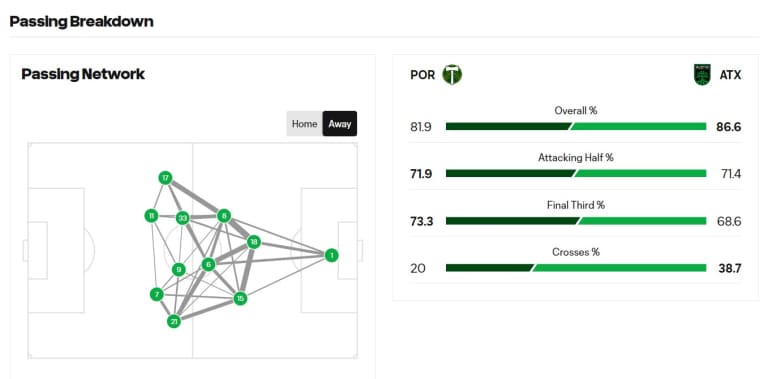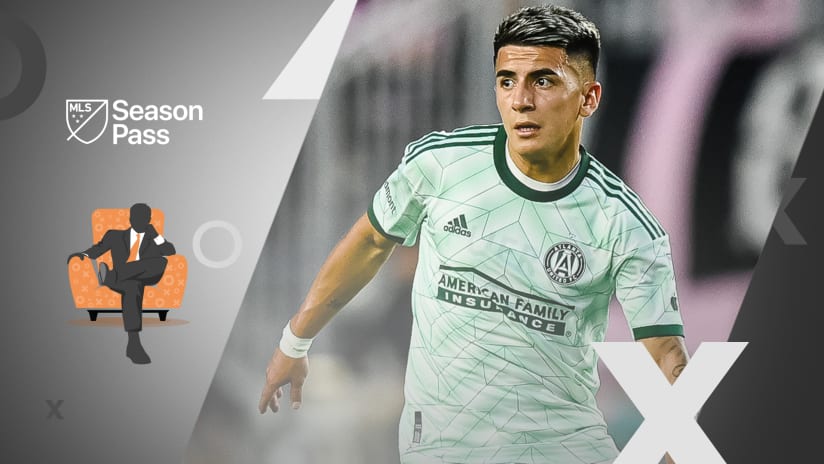Since there’s been a lot of talk about the U-20 World Cup this week – and specifically teams not releasing players – let’s start this column by taking a look at the growth in the importance of domestic teenagers in MLS over the past half-decade.
By “growth in importance” I mean both “how many homegrown, US-eligible kids are playing semi-regularly?” and “how many homegrown, US-eligible kids are playing serious rotation minutes that make them central to their club’s fortunes?”
Here are the numbers:
- 2023: 26 total US-eligible players aged 20 or younger have played at least 100 minutes so far; eight have played over 600 minutes. 10,658 minutes total.
- 2022: 24 total US-eligible players aged 20 or younger had played at least 100 minutes at this point in the season; three had played over 600 minutes. 8,693 minutes total.
- 2021: 23 total US-eligible players aged 20 or younger had played at least 100 minutes at this point in the season; five had played over 600 minutes. 8,120 minutes total.
- 2020: 20 total US-eligible players aged 20 or younger had played at least 100 minutes at this point in the season; three had played over 600 minutes. 6,629 minutes total.
- 2019: 15 total US-eligible players aged 20 or younger had played at least 100 minutes at this point in the season; six had played over 600 minutes. 7,826 minutes total.
- 2018: 11 total US-eligible players aged 20 or younger had played at least 100 minutes at this point in the season; four had played over 600 minutes. 5,445 minutes total.
That’s pretty significant growth over the past half-decade, and if anything the current numbers undersell the trend since many of the best US U-20 eligibles are now being sold earlier and for more money than they ever have been in the past – think Gaga Slonina and Ricardo Pepi, each of whom would be on this list if they were still in MLS.
I suspect that, if anything, this trend will speed up as the pro player pathway from MLS NEXT to MLS NEXT Pro to MLS proper becomes more well-trod and robust.
As usual, all data is from TruMedia via StatsPerform unless otherwise noted. In we go with Rivalry Week officially here:
Chicago Fire FC vs. St. Louis CITY SC
- WATCH: Apple TV - Free | Saturday, 1 pm ET
We’ll see if the Fire get a new-coach bounce upon the dismissal of Ezra Hendrickson, but given the club’s track record, I’m not holding my breath:

The good news is Frank Klopas, who’s now officially the new head coach, is second on the above list in PPG. Maybe he can pull the right levers, but this really seems like a top-down systemic issue with Chicago.
Atlanta United vs. Charlotte FC
- WATCH: Apple TV - Free | Saturday, 7:30 pm ET
Giorgos Giakoumakis (hamstring) is still expected to be sidelined for Atlanta this weekend, and that’s an issue. In his 463 minutes on the pitch thus far, the Five Stripes have scored nine goals and allowed just two. In the 684 minutes they’ve played without him, they’ve bagged 11 and conceded 16.
Columbus Crew vs. Orlando City SC
- WATCH: Apple TV - MLS Season Pass | Saturday, 7:30 pm ET
Wilfried Nancy’s patient approach to possession pays off in an obvious way: The Crew complete a lot of their passes. It’s a basic thing, but they’ve got a passing accuracy of 85.1% which, when combined with their solid defensive structure, means they don’t give the ball away cheaply in bad spots all that often.
D.C. United vs. Nashville SC
- WATCH: Apple TV - MLS Season Pass | Saturday, 7:30 pm ET
Nashville’s field tilt – the share of final third passes they hit – through the first five matchdays of the season: 41.4%, dead last in MLS.
Since then it’s up to 47.4%, which is 18th in the league.
Being more dimensional has treated them well, and they’ve been able to manage it without giving up their counterattacking identity (which, to be clear, they should not give up. It’s just not the only thing they should be).
Inter Miami CF vs. New England Revolution
- WATCH: Apple TV - Free | Saturday, 7:30 pm ET
Really good video here on how the Revs have become much more of a pressing team this season:
Of course, that doesn’t really hold true when they take the lead, because Bruce Arena’s always been happy with a 1-0. You can see it in their passes allowed per defensive action when they’re ahead, as they drop all the way to 24th in MLS at 16.94 PPDA.
CF Montréal vs. Toronto FC
- WATCH: Apple TV - MLS Season Pass | Saturday, 7:30 pm ET
Moving Aaron Herrera to right wingback has been the major catalyst (that, and playing against bad teams) in Montréal’s recent surge. He’s now up to second on the team in expected assists.
New York Red Bulls vs. New York City FC
- WATCH: Apple TV - MLS Season Pass | Saturday, 7:30 pm ET
Don’t be surprised if RBNY start winning some games and new head coach Troy Lesesne ends up looking like a genius, because the underlying numbers say it should be happening already. As per American Soccer Analysis, the Red Bulls are tops in both expected goal differential and their robust Goals Added metric. The players – specifically the attacking players – just haven’t been able to execute in moments like this:
At some point – possibly as soon as this New York Derby – that will change.
Austin FC vs. FC Dallas
- WATCH: Apple TV - MLS Season Pass | Saturday, 8:30 pm ET
Austin, playing without the injured Sebastián Driussi this weekend (and likely to be without him for the next few weeks at least), switched from their 4-2-3-1 formation to a 5-4-1 formation:

No. 9 in that network passing graphic is center forward Gyasi Zardes, and the fact his touches came deeper in hold-up play is a red flag. Gyasi’s always been best when pushing through the center backs and getting onto the end of build-up play, but this year he’s getting just 4.55 touches in the opponent’s box per 90, which is 81st in the league.
That’s not a ton lower than his usual number of box touches, but with a team struggling as much as Austin have been, getting worse on the margins can have an outsized negative impact.
Houston Dynamo FC vs. Seattle Sounders FC
- WATCH: Apple TV - MLS Season Pass | Saturday, 8:30 pm ET
Houston have been good at a lot of things this year – I think we’d all agree that they’re much better than expected, and are often fun to watch – but one thing they’ve been bad at is creating open-play chances. They’ve made just 55 this year, which is tied for last with Montréal (though to be fair, Houston have played one fewer game).
Their lack of an elite chance creator, be it in central midfield or on the wing, is actually more glaring than their need for a high-level No. 9.
Sporting Kansas City vs. Minnesota United FC
- WATCH: Apple TV - MLS Season Pass | Saturday, 8:30 pm ET
Emanuel Reynoso is back – kind of, I guess? I’m not sure we should expect him to play this weekend or next, but he is, in fact, back in Minnesota – and if they can get him on the field, the Loons will immediately have their attacking identity back, because their attacking identity was “get the ball to Reynoso and let him cook.”
And they really leaned into that last season, when the Argentine No. 10 took 25.5% of the entire team’s final third touches as per American Soccer Analysis. That’s the second-highest number in their database, which goes back a decade.
Colorado Rapids vs. Philadelphia Union
- WATCH: Apple TV - MLS Season Pass | Saturday, 9:30 pm ET
Kévin Cabral is now officially overperforming his expected goals!
The sample size is way too small to draw any conclusions from it, but through 278 minutes with Colorado this season, he’s got 2g on 1.79xG.
Real Salt Lake vs. LAFC
- WATCH: Apple TV - Free | Saturday, 9:30 pm ET
One of the reasons LAFC are so good is because they have a game model that does not rely on crosses much (or at all, really). They are dead last in total cross ratio (the percent of open play passes into the box that are crosses) at 17.8%.
They create their chances by keeping the ball on the ground and keeping movement around the box. And it obviously works.
Portland Timbers vs. Vancouver Whitecaps FC
- WATCH: Apple TV - Free | Saturday, 10:30 pm ET
The ‘Caps have climbed up to fifth in MLS in expected goal differential, as per American Soccer Analysis. The Timbers are down in 26th.
LA Galaxy vs. San Jose Earthquakes
- WATCH: Apple TV - Free, FS1 | Sunday, 9:30 pm ET
As we saw this week in Chicago & Harrison, we’ve reached the point in the season where coaches of struggling teams are now in danger of losing their jobs. Greg Vanney has surely taken note.













